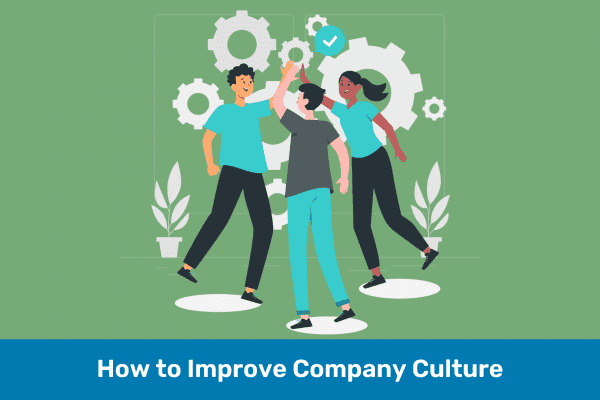Introduction
Imagine a workplace where feedback flows freely, where every suggestion, concern, and compliment contributes to the collective success. This is the essence of a feedback culture—an environment where open and honest communication is not just encouraged, it’s a daily practice. Here, feedback transcends traditional performance reviews, transforming into a continuous, dynamic dialogue that shapes every facet of the organizational landscape.
Why is this crucial for business success? A strong feedback culture propels continuous improvement, encourages innovation, and enhances adaptability. It allows employees to align closely with company goals, fuels their motivation, and boosts their engagement. More so, it cultivates an atmosphere brimming with creativity, as team members feel safe and valued sharing bold ideas and fresh perspectives.
The benefits are clear: a feedback culture not only elevates employee satisfaction and retention but also ramps up productivity and sharpens competitive edges. By fostering such an environment, businesses not only survive; they thrive, navigating the complexities of the corporate world with agility and grace.
1. Setting the Foundation

Leadership Involvement in a Feedback Culture
A key pillar in establishing a thriving feedback culture is leadership involvement. Leaders play a crucial role not just by endorsing the concept of feedback but by actively participating in the feedback processes themselves. When leaders demonstrate receptivity to feedback, they set a powerful precedent for the rest of the organization.
Modeling Feedback Receptivity
One effective way for leaders to model feedback receptivity is by sharing their own experiences with feedback. For instance, a leader might share a story during a company meeting about how a piece of constructive feedback led to personal improvements in their management style or changed the way they approach team meetings. Such transparency not only humanizes the leader but also illustrates the tangible benefits of open feedback.
Leaders can also host regular “open door” sessions where they invite feedback on their own performance. This practice not only reinforces the leader’s commitment to improving but also encourages a culture where constructive feedback is valued and seen as a tool for growth.
Positive Outcomes of Active Leadership Engagement
The active engagement of leaders in the feedback process has numerous positive outcomes:
-
- Enhanced Trust: When employees see that their leaders are open to receiving and acting on feedback, it builds trust across the organization. This trust is fundamental to a robust feedback culture.
- Improved Communication: Leaders who engage with feedback tend to foster a more open communication environment. This openness can lead to more frequent exchanges of ideas and innovations, improving organizational agility.
- Higher Engagement: Organizations where leaders are actively involved in feedback processes generally experience higher levels of employee engagement. Employees feel more connected to the mission and values of the company, knowing their input can lead to real change.
- Better Decision Making: Leaders who incorporate feedback from various levels of the organization can make more informed decisions. This diversity of perspectives can prevent echo chambers and lead to outcomes that better reflect the needs of the entire organization.
Clear Communication
Clear communication about the purpose and processes of feedback is essential. It’s important for management to articulate why feedback is being prioritized and how it will be conducted. This includes outlining the methods of feedback, the frequency, and, importantly, how feedback will be used to support personal and professional development. Clear guidelines ensure that feedback is constructive and aligned with organizational goals, rather than being perceived as arbitrary or punitive.
Establishing Trust
For feedback to be effective, there must be a foundation of trust. Employees need to feel confident that they can express honest opinions without fear of negative consequences. Building this trust involves consistent behavior from management, confidentiality where necessary, and a demonstrable action on feedback received. Trust also grows from demonstrating that feedback is a two-way street—where leaders not only give but also solicit and act upon feedback from their teams.
Impact of Feedback on Engagement
Recent data from Gallup highlights the critical role of feedback in fostering employee engagement. According to their findings, 80% of employees who said they received meaningful feedback in the past week felt fully engaged with their work. This statistic powerfully illustrates how regular, thoughtful feedback can invigorate employees, boosting their connection to their work and enhancing overall productivity. This engagement is pivotal, as engaged employees are typically more motivated, committed, and aligned with the organization’s objectives.
Also Read: How to Improve Company Culture?
2. Developing the Framework

Creating Policies and Guidelines for a Feedback Culture
To effectively nurture a feedback culture, organizations must develop clear policies and guidelines that support regular and constructive feedback. These policies should outline how feedback is integrated into daily workflows, performance evaluations, and professional development plans. It’s important to specify what types of feedback are encouraged, how they should be delivered, and the expected follow-ups or actions. Such policies ensure consistency and fairness, helping to prevent feedback from becoming a source of tension or confusion.
Feedback Mechanisms
A variety of feedback mechanisms can be used to accommodate different communication styles and situational needs. Regular performance reviews offer a structured schedule for feedback, but they should be complemented by more dynamic methods:
-
- 360-Degree Feedback: This comprehensive approach gathers feedback from a person’s manager, peers, and direct reports, providing a well-rounded view of their performance and interactions.
- Real-Time Feedback Tools: Technologies that facilitate immediate feedback can enhance learning and adjustment processes significantly. These tools are particularly useful for remote teams where digital communication is paramount.
- Informal Feedback: Encouraging informal, day-to-day comments between coworkers can cultivate a more open and ongoing feedback environment that feels natural and less formalized.
Training for a Feedback Culture
Training is crucial for teaching staff how to both give and receive feedback effectively. Constructive feedback should be specific, actionable, and focused on behavior rather than personal attributes. Training sessions can also help individuals understand how to respond to feedback positively, seeing it as an opportunity for growth rather than criticism. This not only improves the feedback process but also builds a culture where continuous improvement is embraced by all. Training should be regular to refresh these skills and to introduce new employees to the feedback norms of the organization.
Read Further: Creating a High Performance Culture
3. Developing Feedback Skills Within Teams

Introduction to Feedback Skills
Enhancing individual and team abilities to handle feedback is crucial for nurturing a strong feedback culture. It’s not just about establishing systems; it’s also about empowering people with the necessary skills to engage in these processes effectively.
Key Skills for Providing Feedback
To create a positive impact, feedback must be constructive, specific, and timely. Here are essential skills for giving effective feedback:
-
- Be Clear and Specific: Avoid vague comments. Use specific examples to illustrate your points.
- Focus on Behavior: Direct your feedback towards behaviors that can be changed, not personality traits.
- Offer Solutions: Don’t just critique; suggest actionable steps or solutions to help improve performance.
- Deliver with Empathy: Communicate your feedback from a place of support and care, not judgment or frustration.
Key Skills for Receiving Feedback
Receiving feedback well is just as important as giving it. Key skills include:
-
- Listen Actively: Focus fully on the speaker, acknowledge the feedback, and clarify doubts without defensiveness.
- Ask Questions: Engage with the feedback by asking for specific examples or suggestions for improvement.
- Reflect and Act: Consider the feedback carefully and plan actionable steps to implement any necessary changes.
Training Workshops
Organize regular training workshops that focus on developing these feedback skills. Use role-playing scenarios to practice giving and receiving feedback effectively. These workshops can help demystify the feedback process and make it a more comfortable part of everyday work life.
Creating a Supportive Environment
The right environment is essential for these skills to be practiced and refined:
-
- Foster Openness and Trust: Cultivate an atmosphere where feedback is seen as a tool for growth and improvement.
- Lead by Example: Encourage managers and leaders to actively participate in feedback sessions, demonstrating both how to give and receive feedback effectively.
Monitoring Progress and Continuous Learning
Keep track of how well teams are developing their feedback skills through:
-
- Regular Check-Ins: Use brief, frequent check-ins to review progress on feedback implementation and skill enhancement.
- Feedback Surveys: Periodically survey team members about their comfort and competence with feedback to identify areas needing further support.
Read More: Building a People-First Culture
4. Implementing the Feedback Process

Integration into Daily Operations
Effective feedback culture is not just about setting sessions or meetings; it’s about weaving feedback into the daily fabric of operations. Organizations can achieve this by incorporating feedback loops into regular workflows and meetings. For example, start or end team meetings with a quick round of feedback about the day’s or week’s tasks. Encourage managers to provide on-the-spot feedback during work processes, focusing on both what went well and what could be improved. This continuous, casual approach helps normalize feedback and reduces any associated stress or formality.
Encouraging Participation
Active participation from everyone in the organization is essential for a thriving feedback culture. To encourage this, create an environment where feedback is consistently seen as valuable. Recognize and reward those who regularly engage in the feedback process, both as givers and receivers. Use communication platforms where employees can easily share their feedback without feeling intimidated. Furthermore, ensure that leaders model active participation by regularly asking for feedback themselves, demonstrating that it’s safe and beneficial to engage openly.
Handling Negative Feedback
Managing negative feedback constructively is crucial to maintaining a positive and productive work environment. Teach employees to frame negative feedback in a constructive manner, focusing on specific behaviors and suggesting actionable changes rather than making personal critiques. When receiving negative feedback, encourage a mindset of growth and learning rather than defensiveness. Train managers in conflict resolution techniques to help them mediate when feedback discussions become tense. By preparing everyone to handle negative feedback constructively, you prevent it from damaging morale and trust.
5. Monitoring and Adapting

Measuring Effectiveness
To ensure that a feedback culture is positively impacting the organization, it’s crucial to measure its effectiveness regularly. Key performance indicators (KPIs) should include both quantitative and qualitative measures, such as employee turnover rates, productivity metrics, employee satisfaction surveys, and performance outcomes. Regularly assessing these indicators helps organizations understand how well the feedback culture is integrated and what impact it has on team performance and morale. This data not only highlights successes but also helps identify areas needing improvement.
Feedback on Feedback
An effective feedback culture also involves evaluating the feedback process itself. Encourage a meta-feedback system where employees can freely share their thoughts about the existing feedback mechanisms. This could be done through anonymous surveys, suggestion boxes, or dedicated discussion sessions. Listening to employees’ opinions about the process gives valuable insights into how it can be refined and ensures that the system evolves to meet the needs of all team members.
Continuous Improvement
The goal of a feedback culture is not to set up a static system but to foster an environment of continuous improvement. Based on the data gathered from measuring effectiveness and feedback on feedback, organizations should be ready to make ongoing adjustments. Whether it’s tweaking feedback methods, retraining team leaders, or introducing new communication tools, flexibility is key. Encourage a mindset of constant learning and adaptation, emphasizing that feedback mechanisms can and should evolve over time to keep pace with organizational growth and changes in the workforce.
Conclusion
In summary, building a robust feedback culture involves several key steps: beginning with leadership involvement to set the tone, establishing clear communication policies, and creating trustworthy environments for open dialogues. Integrating feedback into daily operations ensures that it becomes a natural part of the workplace rhythm, while encouraging active participation helps cultivate a culture where every voice matters and is heard. Addressing negative feedback constructively is critical to maintaining a positive atmosphere and promoting growth.
Monitoring and adapting these practices are vital for sustaining this culture. Regular evaluations of feedback’s impact on performance and morale, alongside soliciting feedback about the feedback process itself, highlight areas for improvement and ensure the system evolves to meet changing needs. This is not a one-time effort but a continuous journey that requires ongoing commitment and adaptability.
For businesses ready to take the first step towards cultivating a vibrant feedback culture, tools like Woliba offer invaluable support. As one of the best employee engagement and wellness tools available, Woliba provides comprehensive engagement surveys that can help organizations measure, manage, and enhance their feedback processes effectively. Embrace Woliba to start transforming your workplace into a dynamic, responsive environment where feedback drives innovation and growth. Contact us today!




